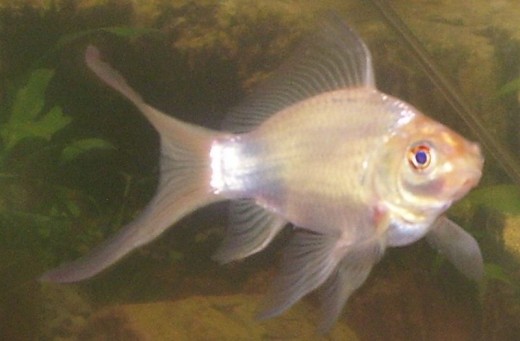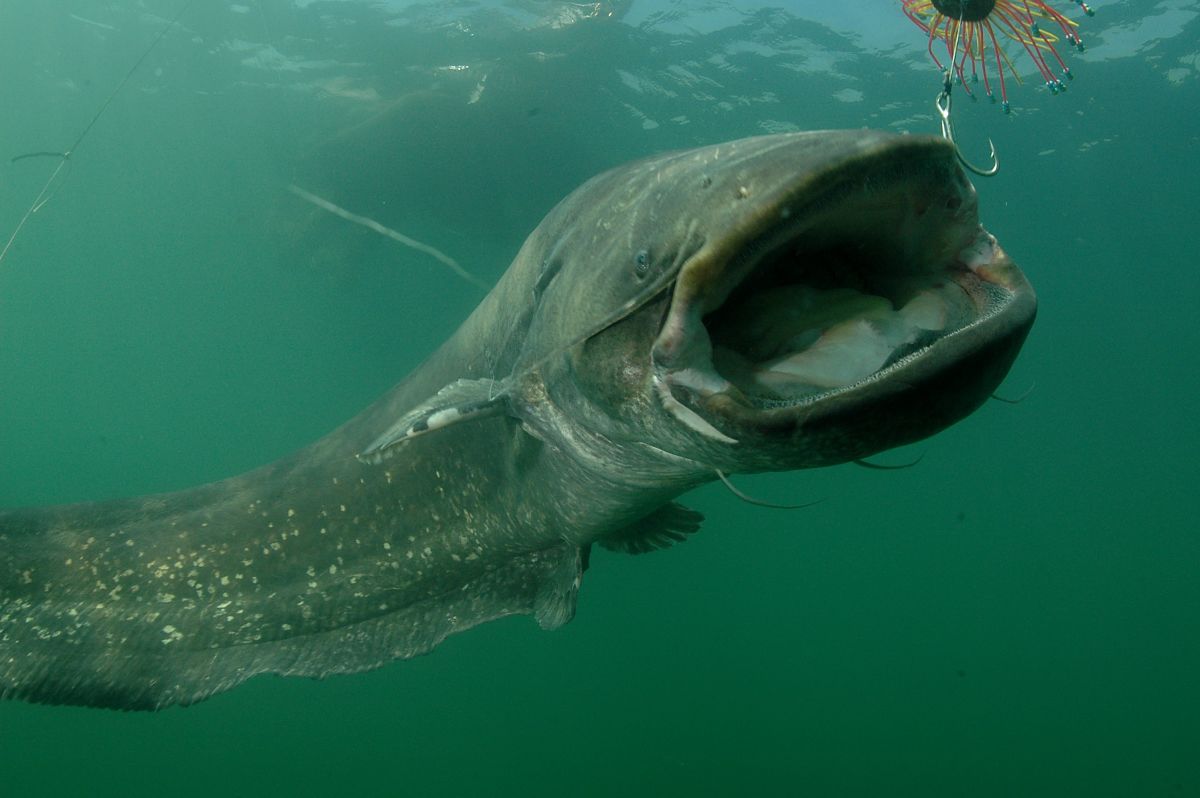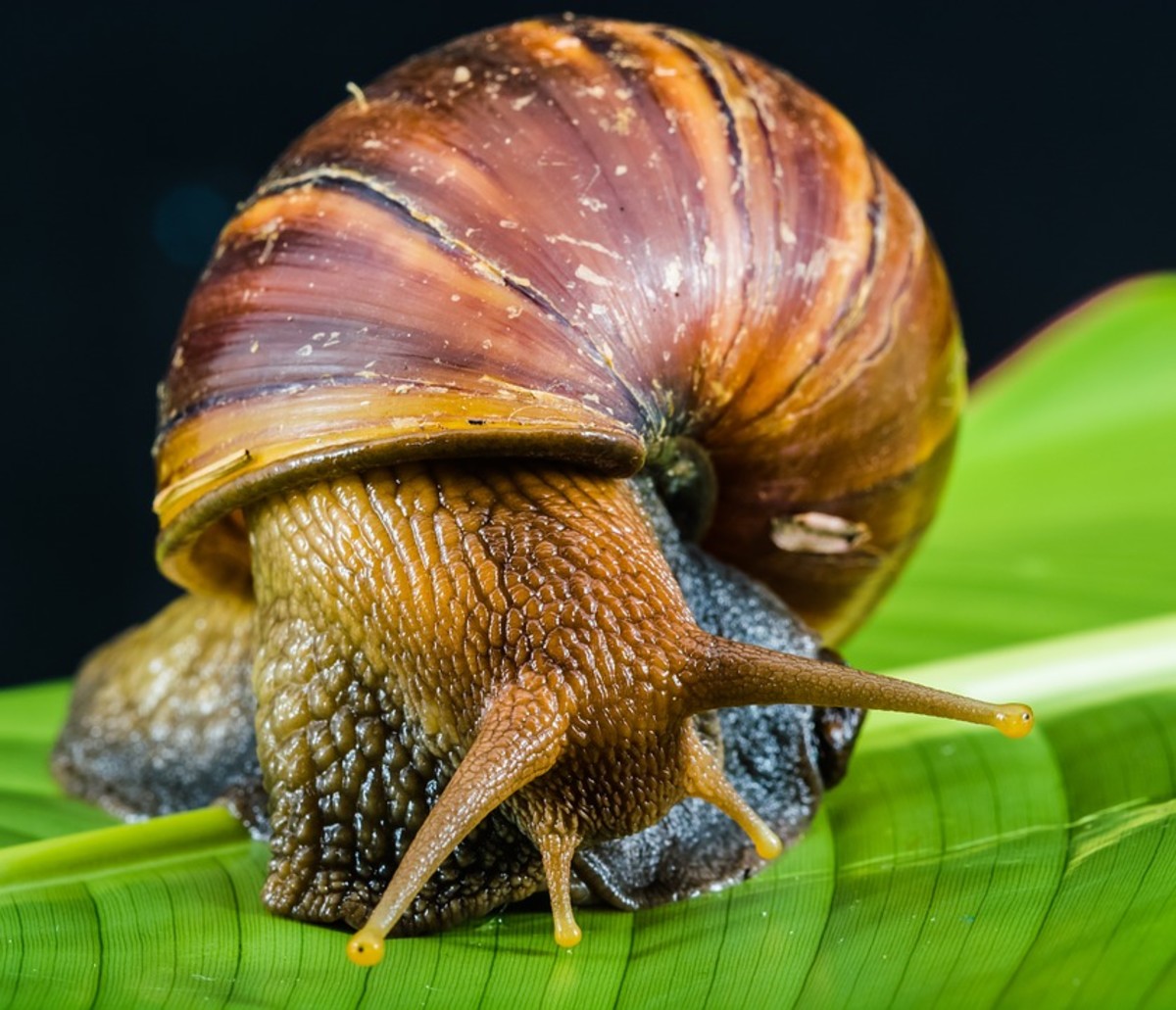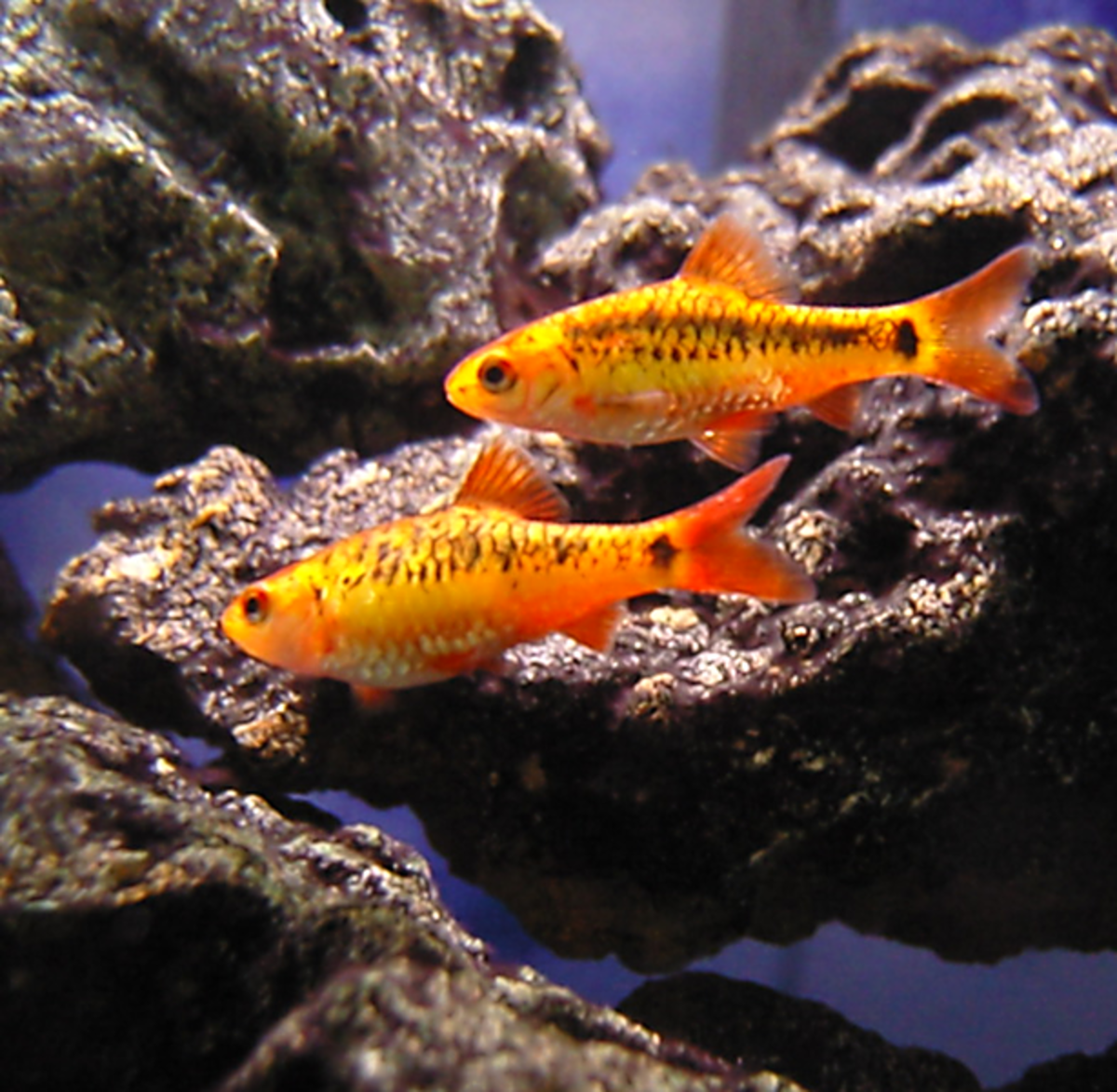Goldfish: An Overview of Comets -- Healthy Fish Care and Full Growth Rate
The right size of tank is crucial, these critters love to grow out of them!
Get started with goldfish today with these offers from Amazon
Here we go with an article on probably the most abused pet in America...the goldfish. You know you've seen these poor creatures being given as prizes at carnivals, given to little children at their birthdays in itty-bitty bowls as a "throwaway pet", and bought on a whim by young and old because "it would be cool to have a fish". The first thing I would like to stress is that fish should never be bought on a whim...that's like adopting a puppy because it sounds like fun but then locking it in a cage and throwing it food that may or may not be appropriate and letting it waste away in its own filth with no space to grow to adulthood. Not a very pretty picture, is it?
Now the alternative. If you decide you would like to buy a fish and are willing to take the time and effort to research your new pet and make sure it has the proper setup then you'll have a very rewarding fish keeping experience and a pretty cool pet.
Did you know?
What you hear about goldfish growing to the size of their environment is a particularly nasty myth. Yes, it's true goldies secrete a growth hormone that, when concentrated enough, will cause them to stop growing...but by that point they're already too big for their environment and if their growth is stunted long before they reach full size then their life span will be stunted.
A goldfish's stomach is about twice the size of a non-carnivorous tropical fish of a like size...this means they require stronger filtration, more swim space, and more partial water changes.
Finally, something positive...a goldfish, if properly cared for and not stunted, can live up to 30 years (possibly longer, though some major advances in fish keeping are not thirty years old yet so it remains to be seen how long they can live now) and does not reach maturity until two or three years old.
If you have a pond the goldfish in it should not be fed when the water is under 50 degrees Fahrenheit, at this point the fish's metabolism has slowed to a state of hibernation and food eaten at this point has a high likelihood of rotting in the fish's gut. As long as the goldfish does not freeze solid in said pond they will survive the cold weather...this goes for single-tailed varieties such as comets (our current topic of discussion), commons, or shubunkins.
What to know before you buy
Obviously it's very important to be sure you have the proper size of tank first and foremost. Comets are almost always purchased as babies in the stores so you have to know what you're getting into...they don't stay small!
An average comet will reach 12"-16" in length, some will stop around 8" but it's not common and can denote a genetic defect that may or may not affect the life span of your fish. If you have a pond, plan for one fish for every 20-30 gallons of water. In a tank you have to plan 30 gallons per fish, but also plan for a tank that is at least twice as wide as the fish is long and preferably four times the fish's length (for example, for a 12" fish you'd want a tank at least 2'x4'). Since you probably will not know the grown size of your fish (many are sold between 2" and 4") always plan on the large side...usually planning for a foot-long fish is sufficient.
I can already hear people saying "well why go to all this trouble, they die so easy anyway" and this statement is simply not true. While comets may not be as hardy as their common cousins their health problems often involve fin problems caused by bad water quality...so this puts them at approximately the second hardiest fish in the fish keeping industry. There are a very few that may die from stress during shipping or internal parasites that don't get treated in time, but the vast majority die from an improperly cycled tank.
When you cycle a tank you are growing the bacteria that will break down the ammonia from the fish's waste (which is highly toxic and will dissolve a fish's slime coat, burn its eyes, and subject it to a very painful death in an improperly cycled tank) into less toxic nitrite, and that into even less toxic nitrate. The nitrates must be removed every now and then through partial water changes but we'll get into that later. There are many methods for cycling and I personally write off everything that involves using fish to do it, this is both unnecessary and inhumane and often results in more "throwaway fish" which are, more often than not, goldfish. My personal preference involves setting up the entire tank with filtration then putting a small pinch of fish food in every day for about two weeks. Do a partial water change and test the water...if there is no ammonia and minimal nitrite you can now add your fish, just bear in mind that you are only partially cycled at this point and the nitrite must be watched closely and partial water changes done to keep it within an acceptable level until it, too, disappears. There are plenty of online sources that will help you through the cycling process.
Since goldfish have quite a lot of waste the filtration has to be up to the task of keeping up with it...the general rule of thumb is to have enough filtration to turn over all the water in the aquarium ten times per hour (in a 55-gallon tank you'll want a filter rated at 550 gallons per hour) or approximately double the filtration you'd have on most tropical fish tanks.
Feeding is another important thing to research before purchase...that's right, you can't just throw them some flake and assume that's all they need. In fact most of the flakes they sell on the shelves are nutritionally deficient and all fish should be fed a variety anyway. If you're serious about your fish's health I personally recommend the food sold by The Goldfish Connection (linked below). While it may seem more expensive up-front (and it is a little) it is better than the competition by leaps and bounds and you wouldn't believe how much the fish attack that stuff. I feed my own goldfish alternating meals of Pro-Gold and Salad Supreme along with live food (grindal worms, brine shrimp, and mosquito larvae are some of the best-received and most readily available live foods). I also keep some Medi-Gold on hand for all new arrivals because internal parasites are fairly common in some pet store fish and cannot be eradicated by medication in the water; if this medicated food is kept sealed up it will last quite a long time. If you're still planning on store-bought food I strongly recommend a sinking pellet coupled with live food and some sort of algae wafer.
Finally! Time to buy the fish!
You have your properly-sized tank set up and cycled, you have read up on proper feeding and have some of the food you've chosen on hand for your fish as well as read up on the life spans and requirements of your fish to choose the best one for your lifestyle and preferences, and it's time to buy!
For the sake of this article we're going to assume that you've decided to buy a Comet. These fish are large so they're easy to see, they have much more individual personalities than a schooling fish, have a long lifetime to really get attached to your fish, are extremely hardy, and require no heater since they are cold water fish.
The dinky little fish you likely have to choose from will probably make you wonder why you've purchased such a gargantuan tank, just remember that that little critter will be growing at an alarming rate and could reach its full size within six months of purchase with the correct feeding and routine water changes.
Comets are gorgeous fish, their defining feature is their long flowing tail and since you chose a Comet instead of a Common we're going to assume you're after a gorgeous tail. If the fish is 1"-2" I look for one with a tail that's at least as long as its body, doesn't have any major chinks or bites and that just looks good with its body. Next, look over the entire fish...you're watching for cloudy or popped-out eyes, pineconed scales, white specks, or anything else that could suggest disease. If your fish had any bites on it it's up to you whether to buy it or not, I generally look for any redness in or around the bite that might suggest infection and then make a decision on the fish based on my findings.
Some people also like to look for an outgoing fish...one that will follow their finger or come up for a friendly nibble during cleaning or feeding...just be aware that these can often be aggressive to smaller fish as well. It is recommended that Comets be bought and kept in pairs since they are sociable animals but it's understandable that this can be difficult to do because of their size requirements (generally a 55-gallon makes a great home for a pair of Comets).
When you've made your selection hurry home with it as fast as you can, keeping the fish out of direct sunlight or sudden temperature changes (bitter winter weather is a good example) then float the fish in its bag for about a half-hour before releasing it into the water.
Congratulations on your new pet!
Maintaining water quality
Keeping up an aquarium is actually pretty easy. While the fish is growing you'll probably have to test the water often or just do routine water changes whether it's needed or not because the ammonia output of that fish is going to be changing radically until he's full-grown. Most sources suggest a partial water change when your nitrate tests at 40ppm or above (ammonia and nitrite should be 0 when the tank is fully cycled), I personally do water changes at 20ppm. Tests can be purchased as strips or drops, drops are generally more accurate but strips are close enough for hobbyists.
Alternatively, if you have a pond that is not overstocked you may never have to do water changes as ponds often grow enough algae to use up all the nitrates, just do regular tests for a while to figure out if changes are needed or not (minerals in the water are partially replaced by re-filling after water has evaporated or blown out of the pond).
Conclusion
Goldfish are one of my very favorite fish for their longevity and personalities as well as their unique appearances and ease of care...not to mention I love big fish.
When cared for properly a goldfish can be one of the most rewarding pets you'll ever own and once you have a set routine for its care it's exceedingly easy to keep in top health...but even while starting up it's still less work than, say, cleaning a litter box. There are many tools that can help with care of your fish, my favorite and most indispensable is the Python No Spill Clean and Fill unit (available at most pet stores and online) that makes partial water changes easy.
Of all the goldfish Comets are my favorite of the single-taileds for those gorgeous flowing fins and vibrant colors. If cared for correctly this fish will give you many years of enjoyment both in simply viewing and in the sense of accomplishment you'll get for being one less person to abuse these gorgeous animals.

Additional resources for your new goldfish
- Aquarium Giants: Which Fish Get HUGE? Big Tank Fish ...
Large freshwater aquarium fish are often bought as juveniles by inexperienced owners of small aquariums. The result is that these oversized fish often suffer stunting and ill health due to improper housing. Which ones grow into big freshwater aquariu - Essential Equipment for a Freshwater Aquarium and Gr...
Setting up a freshwater aquarium can be challenging, but a basic set of essential equipment will get you off on the right foot. - Aquarium Stocking Levels: How Many Fish Per Tank and...
Aquarium stocking levels are an essential part of fish health. Here are some guidelines for how to stock a freshwater aquarium, as well as an overview of possible exceptions and how often you should add fish to the tank. - The Goldfish Connection
An excellent site for resources, top-quality food and where you can see some of the loveliest goldfish on the market - KoKo's Goldfish
Resources and a lively message board for all your goldfish support needs




